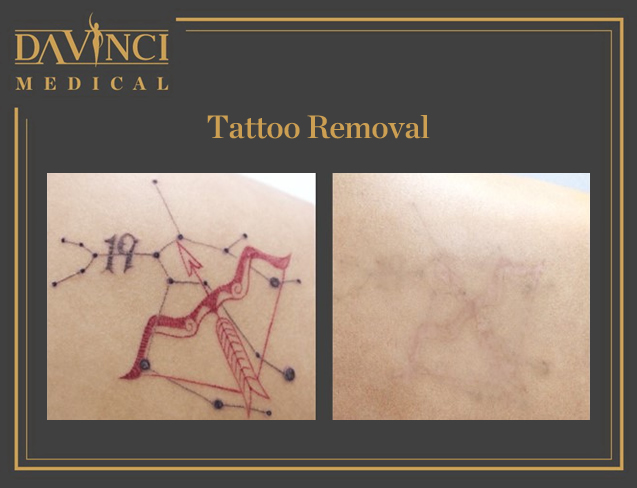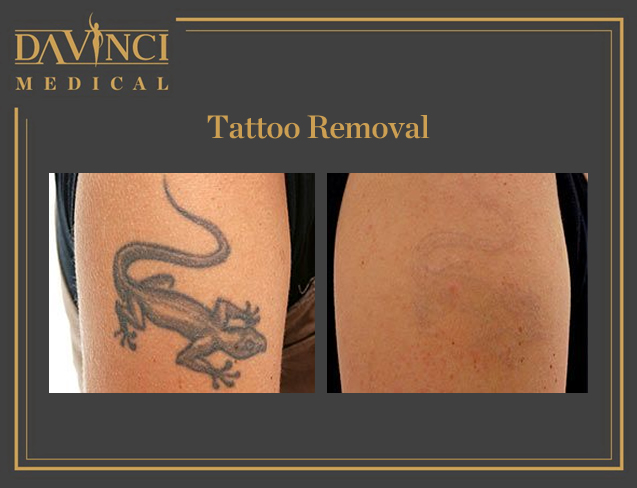Aesthetic Dermatology Birthmark & Tattoo Removal


Birthmark & Tattoo Removal Solutions
Birthmark
Get the look you desire with Da Vinci Medical because birthmarks are optional
A birthmark is a coloured mark that is often present at birth (or develops soon afterwards) and is visible on the skin.
Types of Birthmark and the causes of them
Birthmarks can be caused by a variety of different issues, including the abnormal grouping of blood vessels or clusters of pigment cells. There are a wide variety of birthmarks, some of which are responsive to treatment with either laser or intense pulsed light (IPL) therapy. There are two main categories of birthmarks: vascular and pigmented in origin. A small number of birthmarks are associated with more serious medical conditions, requiring investigation.
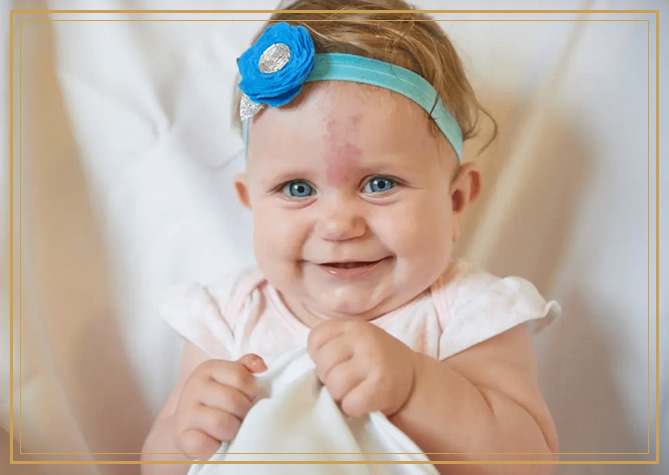
Vascular Birthmarks
These birthmarks are usually red in colour and are caused by a malformation of blood vessels. This means that they appear when the blood vessels beneath the skin are either too wide, too narrow or too numerous. There are several types of vascular birthmark (see below) which present with different visual characteristics.
Macular stains (also called salmon patches)
are the most common type of vascular birthmark. These are pale red marks which typically fade during early childhood, although they can remain into adulthood. These are most commonly found on the back of the neck, eyelids and forehead. These patches can become more noticeable when a baby cries. Since these birthmarks are harmless with a faint appearance they usually require no treatment.

Infantile haemangiomas (also called strawberry naevi)
can be present above or below the skin’s surface anywhere on the body.
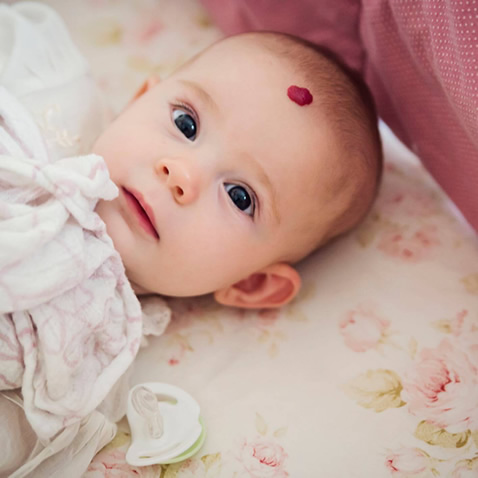
Superficial infantile haemangiomas
usually appear as raised marks on the skin which are bright red, while deep infantile haemangiomas may be more bluish in colour. These infantile haemangiomas are not hereditary and are not a sign of ill health. Laser birthmark removal can be effective for treating infantile haemangiomas.

Port wine stains
usually appear on the extremities, neck or face and have a red, pink or purplish colour. These stains can start off large or small and tend to grow as the body develops and can vary between a few millimetres to several centimetres in size. In adulthood, they can also darken, thicken and become bumpy in texture. Port wine stains can affect a person’s self-esteem and can even have a significant psychological impact. These birthmarks will not fade without treatment and are sometimes associated with increased pressure in the eye (glaucoma) and/or seizures when located on the face.
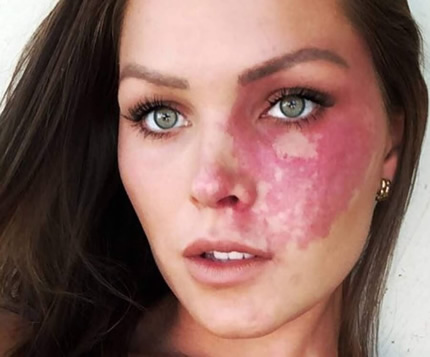
Nevus of Ota
have a blue-black colour and, like port wine stains, are sometimes associated with eye disorders. These birthmarks are usually found on the forehead and around the eye. Around half of these naevi are present from birth while the other half begin to develop during puberty. People of Asian descent are more likely to bear these birthmarks. Laser treatment can remove or dramatically reduce the colouration of these marks. Another option is cosmetic camouflage.
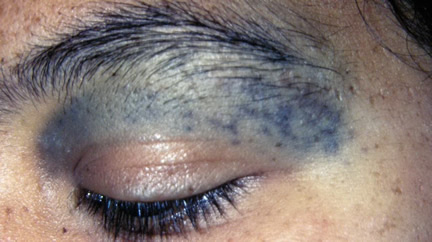
Pigmented Birthmarks
Pigmented birthmarks are caused by an excess of the pigment melanin and are usually brown in colour. There are different types which manifest with different marks.

Mongolian spots
Mongolian spots are blue-black spots that usually appear on darker skinned children of African, Asian, Hispanic, American Indian or Southern European descent. These birthmarks are often mistaken for bruises but unlike a bruise, can last for months to years. Mongolian spots are often a few centimetres in diameter but can be larger. They occur on the lower back and buttocks and usually disappear spontaneously within four years, although they can persist.
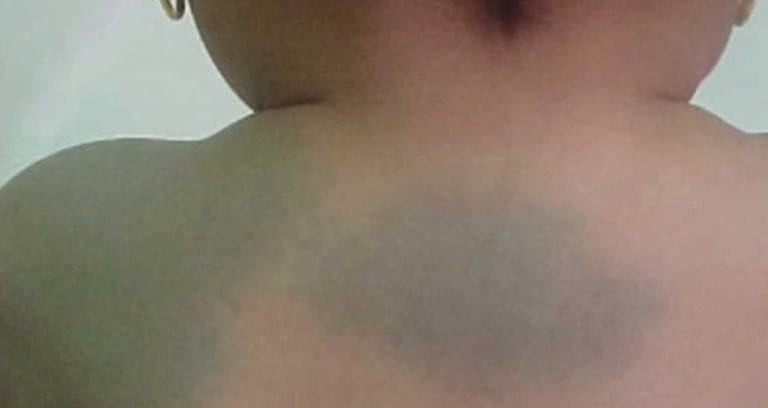
Café au lait
Café au lait spots are coffee coloured areas of skin. These light- to dark-brown marks can appear on any part of the body. These marks can multiply with age and vary in size. Having six or more of these spots by the time a child is 5 years old warrants further investigation. These spots can be a sign of a more serious medical condition called neurofibromatosis and should be assessed by a dermatologist.
Moles that are present from birth are known medically as congenital melanocytic naevi. Whereas those that appear later on in a person’s life are called acquired naevi. These common marks can be brown or black in colour and sometimes have hair growing from them. They are caused by an excess growth of pigmented cells in the skin. Very large congenital nevus can be a risk factor for developing melanoma later in life and should be regularly monitored by a doctor.
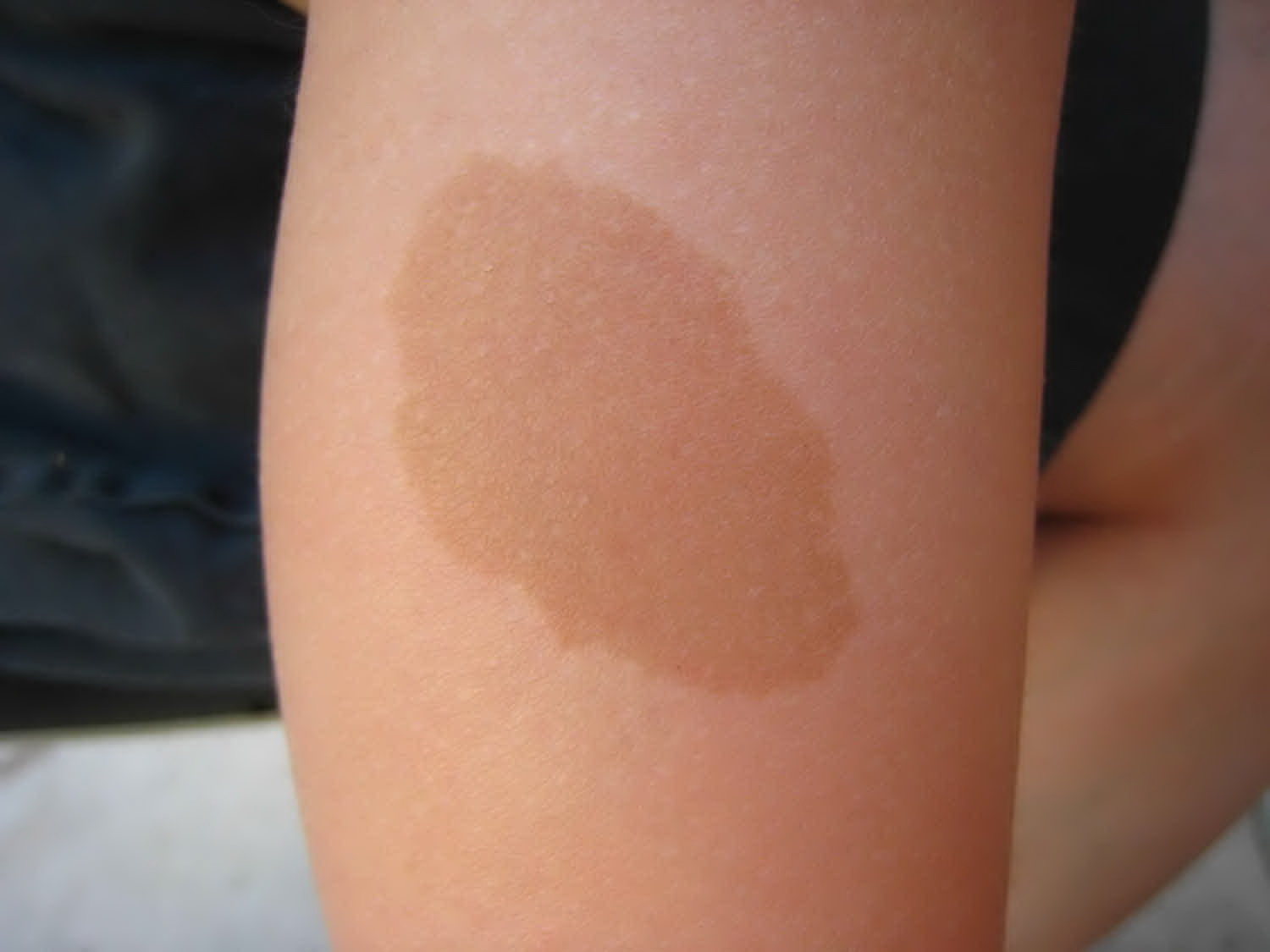
Our approach
The majority of birthmarks are harmless and do not require treatment. However, for those that are unsightly or causing embarrassment or distress, there are treatments available to reduce their appearance. It is not always possible to completely remove a birthmark, but many people can benefit from treatment to lighten a birthmark or reduce their appearance.
Here at the Da Vinci Medical Clinics, our doctors will evaluate your birthmark and provide you with clear treatment options. We offer the latest laser treatments for birthmark removal and lightening. These are specially chosen to perform well with Asian skin which is highly sensitive to heat, reducing any risks of hyper-pigmentation. All our accredited specialists ready to provide you with the highest quality of care.
Tattoo
Don’t let the past define you, when you can erase it with Da Vinci Medical
Your body is your canvas and filling that canvas is so exciting. Yet in the buzz, we can all make mistakes; such as, not taking the time to plan the tattoo’s content, styling or placement. Your tattoo journey doesn’t have to be straight-forward and it’s completely natural to figure out what you want your body to reflect over time. So if you’ve been thinking about removing your tattoo, you’re not alone! Every year, thousands of people all over the world choose to remove their tattoos.
While a tattoo is something you get for yourself, there are lots of reasons for wanting a tattoo removed. Those who obtain tattoos may suffer immediate regret when the tattoo artist messed up, or embarrassment years later when their lives change, be it a breakup or a job. Let us erase your regrets from the decorating ink that you no longer find appealing.
Tattoo removal has been performed since ancient times, however, past methods were harmful, ineffective, and painful. Furthermore, methods like salabrasion, dermabrasion, excision, and acid injections often leave unsightly scars. Today, tattoo removal has evolved for the better thanks to advanced technologies.
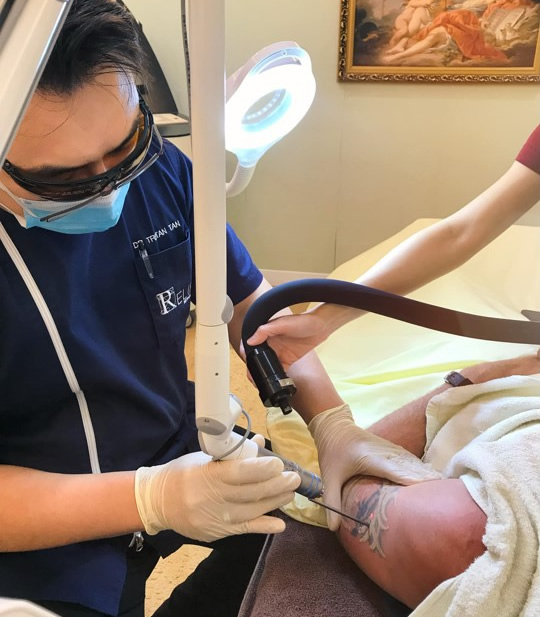
Our approach
Before we begin your tattoo removal treatment, a series of questions will be asked of you to determine your goals with the tattoo that you have. Based upon your answers to our questions including: removal vs. lightening of the tattoo, the color of ink used, age of the tattoo, body location, and type of tattoo- amateur vs professional, the team at Da Vinci Medical will be able to give you a proper estimate of cost and timing with an approximation of how many treatments will be required for your particular tattoo’s removal. We will suggest a series of treatments because 1 treatment will not be enough to entirely remove an unwanted tattoo, and your satisfaction is our ultimate goal. Typically, it takes between 5-15 treatments spaced out every 2 months for a tattoo to be considered gone.
